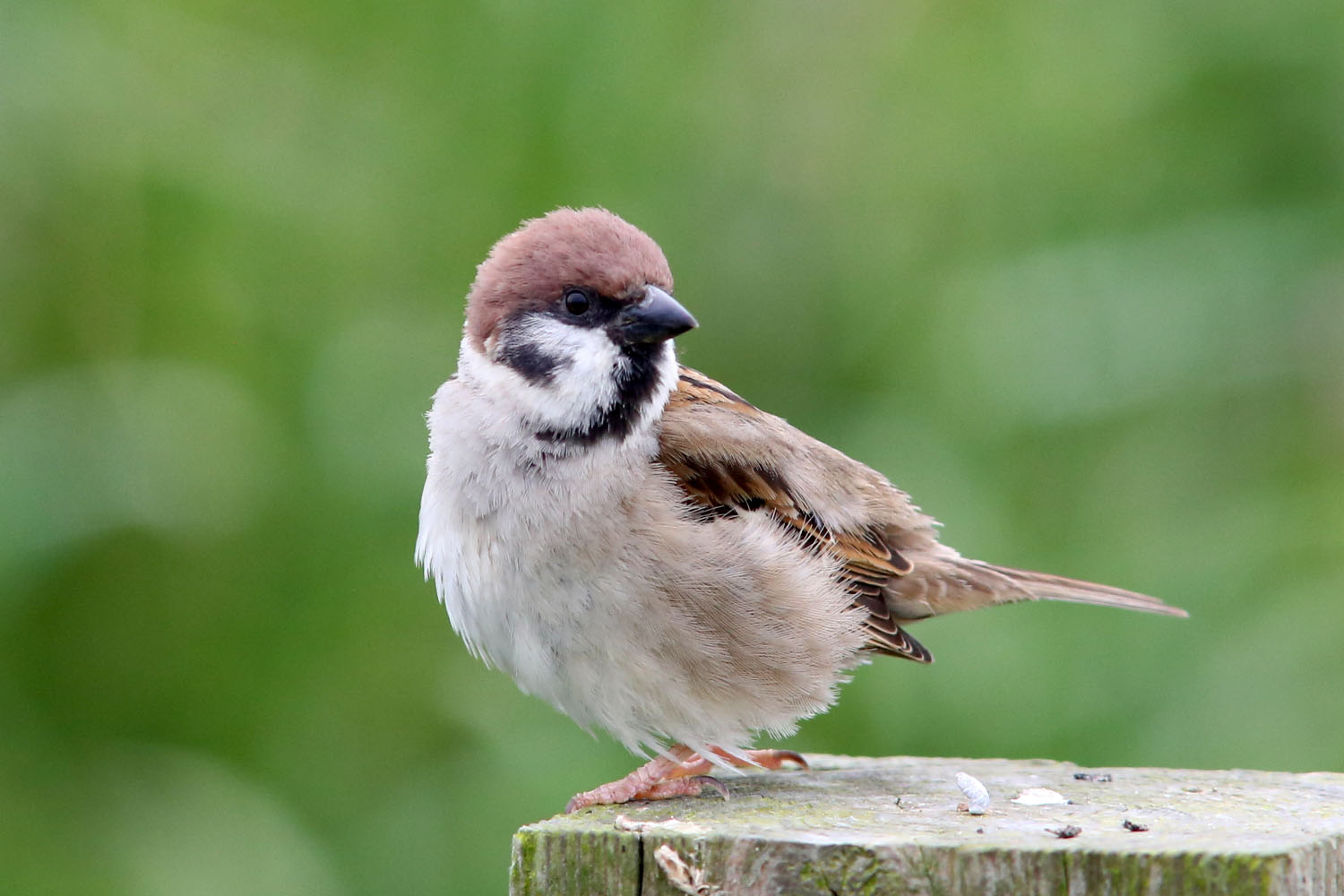
The Field Sparrow also lacks the American Tree Sparrow’s dark chest spot. The pink bill helps to complete the innocent look. This look is created by the completely unmarked lores, between the eye and the bill (where the Tree Sparrow has at least some dark marking), and the whitish eye-ring, which is often quite conspicuous. Its facial expression is different, however: the Field Sparrow has an incredibly blank, innocent face, as if it has never had a bad thought in its life. It’s similarly long-tailed, and it has the same general pattern of reddish brown cap and eyeline on a pale gray head. In some ways, Field Sparrow is very reminiscent of American Tree Sparrow. Field Sparrow, adult, May in Ogemaw County, Michigan. Their dark eyeline is narrow, black, and just as sharply defined in front of the eye as behind it, giving a different look to the face from that of the Tree Sparrow. Their bills are black in summer, a mix of pink and black in winter, but not neatly bicolored black and yellow. Chipping Sparrows are a little smaller and shorter-tailed. But overlaps and strays mean that they can’t be identified solely by the calendar. Many people in the northern states and southern Canada get both species at their feeders but not at the same time: Chippings in summer, Trees in winter. Superficially at least, the bird most similar to American Tree Sparrow is the Chipping Sparrow. Chipping Sparrow, winter adult, December in Socorro County, New Mexico. Back striped with reddish brown, gray, and black. Plain pale gray, usually with a dark central spot on chest. Bicolored, with black upper mandible and yellow lower mandible. Crown and line behind eye reddish brown, against pale gray head.īill color. But it still has many traits in common with the genus Spizella, so that’s a good place to start. Recently it was moved into a genus by itself, and it’s now Spizelloides arborea.


For many years, its scientific name was Spizella arborea. American Tree Sparrow is a case in point. The fly in that ointment is the fact that many sparrows have been shifted into different genera (plural of genus) in recent years. Looking at scientific names in your field guide is a good way to start separating out these groups the first part of the name, the genus, gives you a handle on which species are closely related. Others are more sociable, and flocks may gather in open habitats where they are easier to see. Some types are solitary and elusive, lurking in dense cover all the time.

But these fascinating birds become easier to recognize when we break them down by season and by groups.ĭividing sparrows up into groups is especially helpful. People new to birding, or even not so new, often regard sparrows as sneaky and streaky, hard to see and hard to ID.


 0 kommentar(er)
0 kommentar(er)
